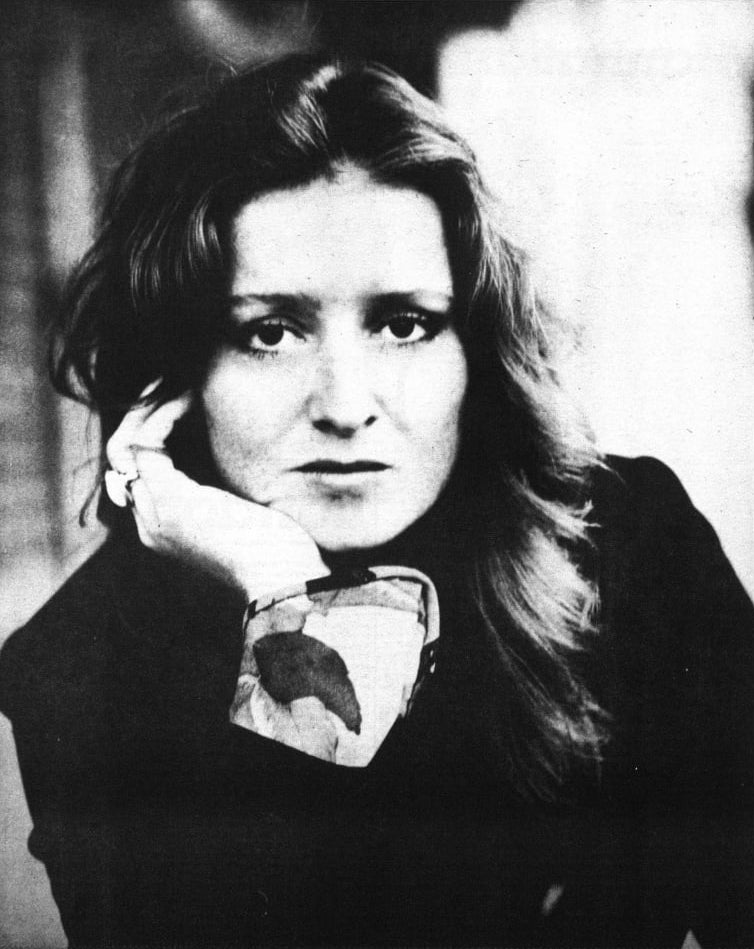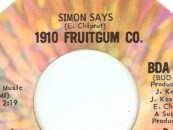 Few career triumphs were as deserved as Bonnie Raitt’s 1989 breakthrough with Nick of Time, her tenth album and first under a new contract with Capitol Records. Her artistic credentials had been established over nearly two decades on stage and record; she was admired by fans and critics but was too often overlooked by sales charts and radio playlists.
Few career triumphs were as deserved as Bonnie Raitt’s 1989 breakthrough with Nick of Time, her tenth album and first under a new contract with Capitol Records. Her artistic credentials had been established over nearly two decades on stage and record; she was admired by fans and critics but was too often overlooked by sales charts and radio playlists.
Raitt’s self-titled 1971 Warner Bros. debut album showcased an eclecticism rooted in folk and traditional blues, deepened by contact with elder masters including hill country bluesman Mississippi Fred McDowell and Sippie Wallace, a peer to Bessie Smith, Ma Rainey and Alberta Hunter. Her musician parents had encouraged her with childhood piano lessons before she received her first guitar at the age of 8. Inspired by the ’50s folk music revival, she was already performing for peers at the Adirondacks summer camp she attended until her mid-teens. By the time she enrolled at Radcliffe College, she was already equally steeped in the blues and progressive politics.
Raitt’s debut captured a warm, soulful voice, prodigious guitar chops and a savvy song sense that bloomed rapidly with her ’70s albums. Although she was already writing songs, she set a high bar that favored other writers, mixing blues, R&B and jazz material with works from contemporaries such as Jackson Browne, John Prine, Eric Kaz, Karla Bonoff and Chris Smither. That openness may have proven an unwitting handicap: Like Linda Ronstadt, Raitt was perceived as an interpreter and thus devalued in an era when confessional singer-songwriters were deemed more “authentic.”
Unlike Ronstadt, Raitt projected a tomboy’s feminism in her determination to be “one of the boys” musically (to paraphrase the title of an NRBQ song she covered in 1982). That expectation of equality extended to a forthright sexuality inspired by her early blues heroines. At a time when rock archetypes were still burdened by chauvinism, Raitt, like Janis Joplin before her, may have unnerved alpha male wannabes. For whatever reason, her sales and airplay crested with 1977’s Sweet Forgiveness and her near-hit single, covering Del Shannon’s “Runaway.”
By the early ’80s, Raitt’s career was foundering. In 1983, the day after mastering her next album, Raitt was dropped by Warner Bros. in a roster purge alongside Van Morrison, Arlo Guthrie and other major acts. The orphaned album was reactivated two years later, with Raitt re-cutting half the material on a set that surrendered her core style to ’80s industrial pop. Released in 1986 as Nine Lives, its bombast was better suited to Bonnie Tyler than Bonnie Raitt, sinking without a trace.
By then, her earlier exuberance had given way to exhaustion, amplified by years of substance abuse. “I thought I had to live that partying lifestyle in order to be authentic, but in fact if you keep it up too long, all you’re going to be is sloppy or dead,” Raitt would later recall. She became clean in 1987 and began focusing on both her physical and emotional health.
Meanwhile, two former Warner Bros. Records staffers were now part of the team looking to revitalize Capitol Records. A&R executive Tim Devine signed Raitt, with a strong ally in newly installed president Joe Smith, who had been president at Warner Bros. and then Elektra/Asylum. Bonnie brought in Don Was, with whom she’d worked on Hal Willner’s Disney tribute album, Stay Awake, to produce.
In 1988, Raitt, a native Californian, had retreated to Mendocino “to kick back and reflect on all the changes of the past year and maybe write some music honoring how grateful I felt to have made it through.” What emerged was the album’s title song, a deeply poignant recognition of time’s passage, its milestones and anxieties, presented with a pensive calm clarified by her sobriety. In her reserved, conversational vocal, Raitt let empathy seep through. Understatement only amplified midlife epiphanies, whether describing a friend’s fears over a ticking biological clock, or how aging parents serve as mirrors to our future selves:
“When did the choices get so hard
With so much more at stake
Life gets pretty precious
When there’s less of it to waste…”
With Raitt trading guitar for electric piano, the song glides at a mid-tempo pace with an undertow of pattering percussion that evokes a ticking second hand. The final verse brings redemption—“love, in the nick of time”—but the song’s emotional punch transcends mere romance as an existential anthem for her then middle-aged peers. Succeeding as both a mission statement for the album, as well as its strongest song, “Nick of Time” is a vindication of Raitt’s discernment as both interpreter and songwriter.
John Hiatt’s “Thing Called Love” offers a more upbeat life lesson, allowing Raitt to raise the temperature with a winking romantic invitation. Hiatt’s 1987 original followed his own recovery from substance abuse, enabling him to leaven the darker moments on Bring the Family, his own career breakthrough. Raitt’s lively cover follows in the wake of Ry Cooder’s signature slide work on the original, and doesn’t disappoint in her own burnished slide attack, influenced by Lowell George. The song’s lusty groove hits a familiar sweet spot in Raitt’s playing.
Among songwriters championed on the album is Bonnie Hayes, a Bay Area singer, songwriter and musician whose sadly overlooked ‘80s work straddled pop, rock and new wave. “Love Letter” is tough, teasing shuffle that finds Raitt stalking a would-be lover she’s surveilling from her car, “workin’ on a love letter, got my radio on.” Here as elsewhere on the album, Don Was taps the soulful backing vocals of his Was (Not Was) stalwarts Sir Harry Bowen and Sweet Pea Atkinson to add an aural wink.
Watch Raitt perform “Love Letter” live in Oakland in 1989
Where “Love Letter” sizzle, Hayes’ other contribution sighs with heartbreak while still conveying the singer’s strength. “Have a Heart” sways against a floating reggae pulse as Raitt confronts commitment issues head on, buttonholing her lover with an opening cry punctuated with reverb:
“Hey!
Shut up
Don’t lie to me
You think I’m blind, but I got eyes to see…”
Raitt’s nuanced vocal and simmering slide guitar personalize the track against a spare but lush backdrop framed by keyboards and percussion that sustains the album’s canny design, which hews to spare ensemble arrangements while drawing on 30 musicians. That strategy maintains a consistent sense of scale while enabling richly varied sonic details, an approach that Raitt and Was would retain on two subsequent, equally successful albums. Subsequent albums would also repeat Raitt’s successful balance of strong outside material coupled with original material—ironically, a return to the template on her first two Warner Bros. albums. Where her opening title track was a look ahead, her closing original, “The Road’s My Middle Name,” is both mission statement and backward glance, a chunky acoustic blues from a road wars survivor that refers stylistically to her earliest records.
Watch Raitt perform “The Road’s My Middle Name” in 1993
Nick of Time, released on March 21, 1989, would go on to sell five million copies in the U.S., earn three Grammys (including two for the title song), and top the Billboard album chart. Two years later, Luck of the Draw would move another seven million albums in the U.S., win another three Grammys and peak at #2 on the Billboard album chart. Through 2023, Bonnie Raitt’s subsequent albums brought her Grammy haul to 13 competitive awards. She was inducted ino the Rock and Roll Hall of Fame in 2000 and received a Lifetime Achievement Award at the Americana Awards in 2012.
Related: Our review of Raitt’s 2016 LP, Dig in Deep
Watch Raitt and John Hiatt perform “Thing Called Love” at Farm-Aid in 1990
Nick of Time and other Raitt recordings are available here. She has another busy tour schedule to promote her recent Grammy-winning album, Just Like That. Tickets are available here and here.
- ‘Running on Empty’: Jackson Browne’s Romance of the Road - 12/06/2025
- ‘Slowhand’: Eric Clapton’s 1977 Platinum Balancing Act - 11/25/2025
- Stephen Stills’ A-List Solo Debut Revisited - 11/16/2025







1 Comment so far
Jump into a conversationI loved Bonnie Raitt all through her career and thought she was unjustly ignored record after record. The “Nick of Time” album actually started sluggishly and was falling on down the charts after peaking at #22, which at the time was a career high for Raitt…..In the wake of her Grammy success, the album shot to #1…and a “new” star was born….20 years in the making….I have seen Raitt live many times….she is legendary…..